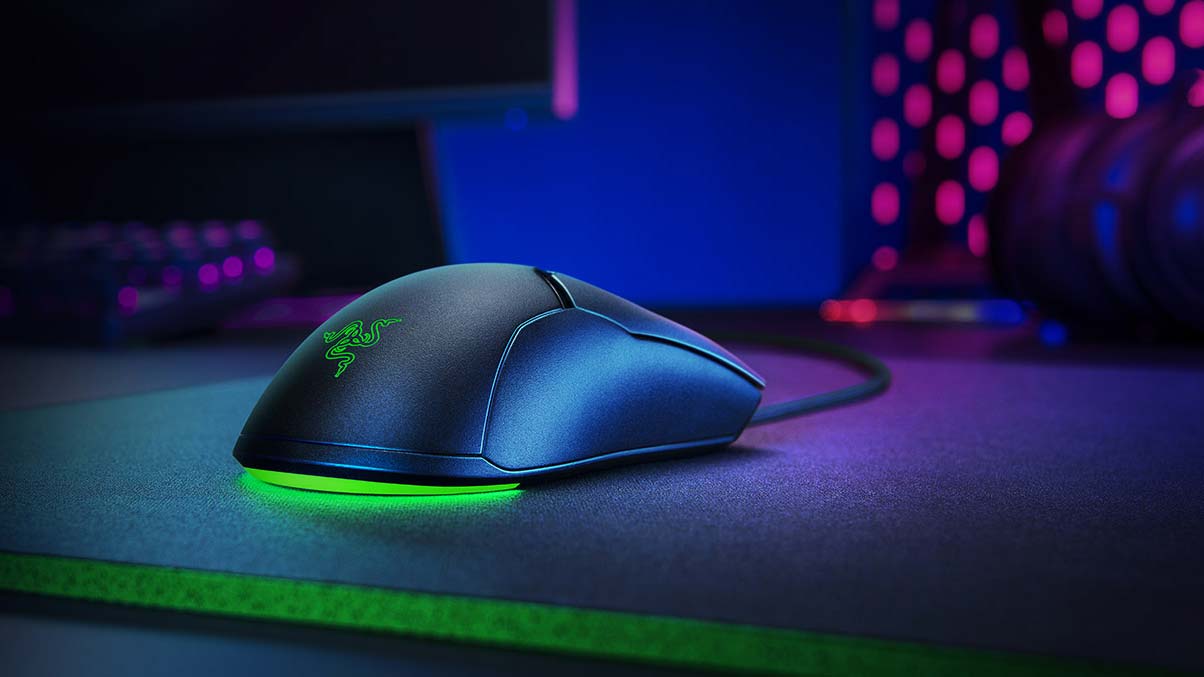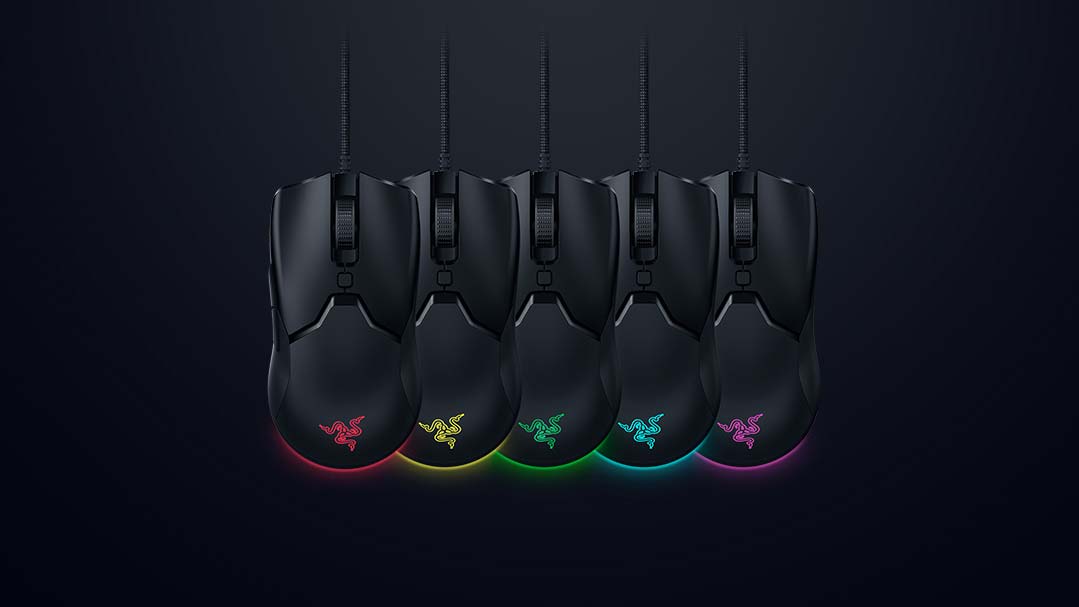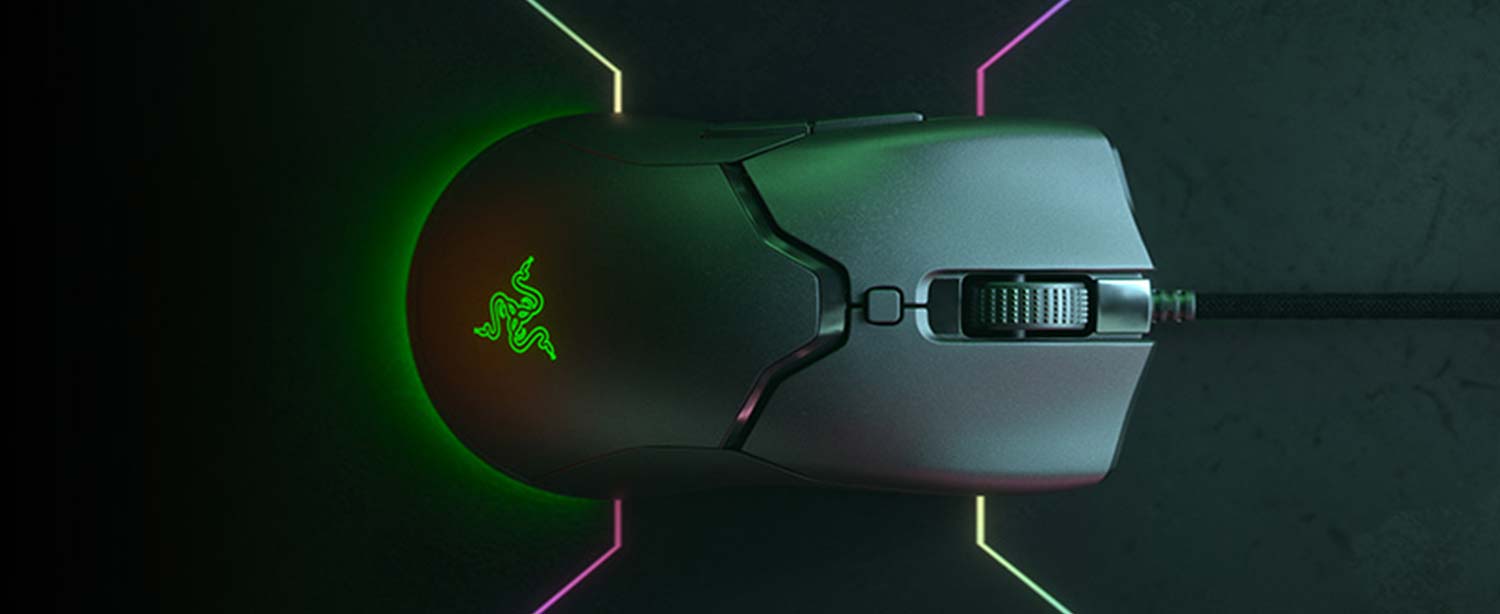Tom's Guide Verdict
The Razer Viper Mini feels solid and comfortable, and it has all the features you'd expect from a much more expensive mouse.
Pros
- +
Extremely lightweight
- +
Inexpensive
- +
Pretty lighting
- +
Good performance
Cons
- -
Not as cheap as competitors
- -
Not entirely ambidextrous
Why you can trust Tom's Guide
The Razer Viper Mini is the latest gaming mouse to shed some excess weight. Over the last few years, gaming mouse manufacturers have introduced more features, more designs, and more bells and whistles, but now the pendulum finally seems to be swinging the other way. Mice like the Cooler Master MM710 and the SteelSeries Rival 3 want to give players the lightest possible mouse, and at much lower prices than those customers may expect.
Whether you really need an ultralightweight mouse is a fair question. But if you do want one, the Viper Mini is one of the best gaming mouse options in that category. It feels solid and comfortable, in spite of its weight, and it has all the features you'd expect from a much more expensive Razer mouse, including RGB lighting.
The Viper Mini costs $10 more than the superior Rival 3, which is to the former's detriment. I also wish the Viper Mini were truly ambidextrous, rather than just almost so. Otherwise, the Razer Viper Mini is another strong gaming mouse from a company that's built its reputation on strong gaming mice.
Read on for our full Razer Viper Mini review.
Razer Viper Mini design

First off, Razer is not kidding about the "mini" moniker. The Razer Viper Mini measures 4.7 x 2.1 x 1.5 inches, making it a good inch smaller than most gaming mice on the length and width dimensions. (The height is about the same as that of most low-profile peripherals.) It's a little tough to grasp for players with large hands, but otherwise, it's very comfortable to hold. I found that a claw grip worked best, but small-handed players may be able to get away with a palm grip, instead.

The mouse has a straightforward, slim design, with slight indentations on each side to facilitate thumbs. My only criticism here is that the mouse is very nearly ambidextrous, but not quite — on the left side, there are two thumb buttons, but there's nothing on the right side. I don't know if Razer could have added two more buttons on the other side and kept the price down. But it's probably frustrating for left-handed players to know that Razer came so close to true ambidexterity and then didn't stick the landing.
Aside from the thumb buttons, there's a left button, a right button, a clickable scroll wheel, and a face button that adjusts the dots-per-inch (DPI) sensitivity by default. There are also two white, gliding feet on the bottom of the mouse that are a little smoother and more durable than the feet on older Razer mice.
Get instant access to breaking news, the hottest reviews, great deals and helpful tips.
Razer Viper Mini Specs
| DPI | 100-8,500 |
| Buttons | 5 |
| Size | 4.7 x 2.1 x 1.5 inches |
| Weight | 2.4 ounces |
Razer Viper Mini features
Like most other modern Razer peripherals, the Viper Mini runs on the Razer Synapse software. As usual, I had some trouble installing the Synapse software; it never seems clear on whether it needs an immediate update or whether you can use it right away.
But once it's up and running, Synapse runs pretty well. You can customize the DPI (up to a level of 8,500), reprogram buttons and modify the RGB lighting. I was actually impressed with the lighting on the Viper Mini — not because it's radically different from other Razer gadgets, but because it's present at all in such an inexpensive mouse. The scroll wheel and the Razer logo on the palm rest both feature illumination, and there's even a charming little LED strip on the bottom of the mouse to provide some undercarriage lighting.

Beyond that, the most striking thing about the Razer Viper Mini is its weight. This minuscule mouse weighs only 2.4 ounces. That's less than the Rival 3 (2.7 ounces) but more than the MM710 (1.9 ounces). Light mice are, theoretically, very useful for esports and for competitive players in general, as they take very little time and effort to move across a mouse pad.
For everyday play, I've never found a mouse's weight to matter much. In fact, I prefer heavier mice, since they give a feeling of solidity when you're resting your hand on one for hours on end. But the Viper Mini is one of the lightest gaming mice on the market, and its design isn't nearly as obnoxious as that of the honeycombed MM710.
Razer Viper Mini performance
The Viper Mini performed admirably in my suite of tests. I paid close attention to how well it worked in Overwatch and Age of Empires II: Definitive Edition, to see whether it could support competitive genres like first-person shooter and real-time strategy.

I wasn't disappointed. In Overwatch, I glided around the battlefield with ease, mapping special abilities to the thumb buttons. Likewise, the mouse went just where I needed in Age of Empires II, whether I needed to pick out individual units for a command group or target a plot of land for a new building.
I also tested the mouse with single-player titles like Pathfinder: Kingmaker, as well as massively multiplayer online games like World of Warcraft. While the Viper Mini doesn't confer any particular benefit for RPGs and MMOs, I still found it comfortable to hold, as well as accurate and precise in game.
Razer Viper Mini verdict
While I'm not the biggest fan of ultralightweight mice, I definitely like this new trend of smaller peripherals that sell for lower prices but don't sacrifice favorite features like RGB lighting or robust software. The Razer Viper Mini is a good mouse all around and an easy recommendation on its price alone.
At the same time, it's not quite as good as the SteelSeries Rival 3, which features more-intricate lighting, a more comfortable design and a lower price. Between these two mice, I prefer the SteelSeries. But if you really want to save that third of an ounce, the Viper Mini is a perfectly good choice, too.

Marshall Honorof was a senior editor for Tom's Guide, overseeing the site's coverage of gaming hardware and software. He comes from a science writing background, having studied paleomammalogy, biological anthropology, and the history of science and technology. After hours, you can find him practicing taekwondo or doing deep dives on classic sci-fi.

